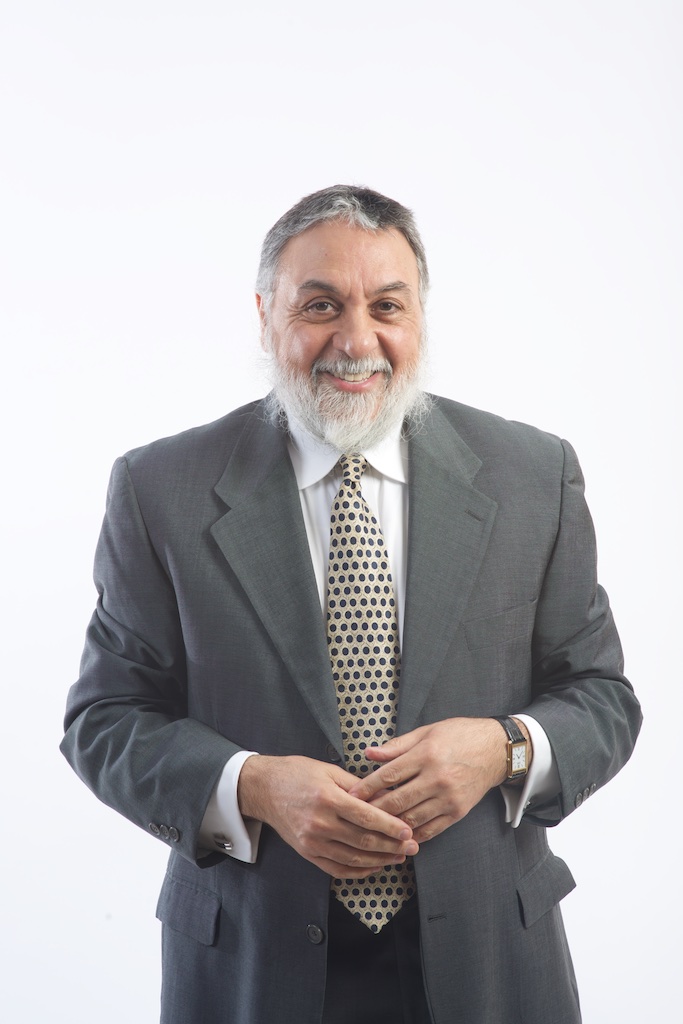Medical Integration Legalities: (This section was written by a licensed professional attorney and reproduced with his
permission. Please see legal disclaimer).
Know the legal barriers:
With some kind of reform imminent in health care, medical practitioners are looking for ways to save their practices… or even to continue to practice, for that matter. Those involved with sports medicine have a viable option to adapt to reform, and that is to join forces with their colleagues.
Joining forces:
There has been increasing interest in recent years in combining the various disciplines that deal with diagnosis, treatment and management of sports injuries. It may appear to be straightforward venture between different sports medicine professionals, but there is more than meets the eye. There are several approaches to achieve that use a variety of legal, corporate and contractual configurations.
Why combine?
There are a number of reasons why several practitioners would want to combine their practices. First, some advantages for patients:
• A “one-stop shopping” convenience… a patient not having to go to several locations at different times to get the necessary diagnosis and treatment.
• The access and collegiality of practice with other similarly specialized professionals create a synergy that inevitably redounds to the benefit of the patient, promoting a more in-depth, careful and considered analysis and response to a consultation and
discussion.
• The combination of practices will usually be less costly to the patient consumers of the professional services provided by the joint enterprise. With lower overhead the enterprise could charge lower fees.
• There could be less travel time and expense to the patient and a single site convenience for patients with limited mobility due to disability.
Here are some advantages to sports medicine professionals:
Overhead can be decreased, ranging from simply sharing rent in a space that is larger, better situated, more well equipped or better laid out than any one practitioner could afford, to sharing in the use of some expensive or infrequently used piece of equipment, such as imaging equipment or other testing equipment or even the office computer.
The most significant attraction of any combination is the possibility of enjoying the benefits and pleasures of not only pool-ing the costs or burdens of professional practice, but also the income or the positive side of the business of health care.
Before describing some of the approaches, it will be useful to first define clearly what is sought by the professionals in the combination and then to outline the potential problems to be encountered so the need and reason for the complications, cost and difficulty of a recommended approach can be set in context.
One legal entity is ideal:
The paradigm of any successful combination would be one single legal entity in which all of the treating professionals participate as equity owners, thus sharing in the proceeds of not only their own professional labors, but the labors of their colleagues as well.
Assumptions for this single entity:
There could be one bill sent out from the entity which reflects the work of any one or any combination of the various professionals.
There would be one chart for any patient treated which could also reflect the effort and input of all the various treating professionals.
Although this model assumes one physical location, multiple locations can, in some circumstances, be an advantage especially if the business objective of the professional combination is to replicate a number of self-contained comprehensive treatment facilities.
The professionals discussed here include not just medical doctors (in most states doctors of osteopathy have the same legal status) but also chiropractors, physical therapists, podiatrists and other practitioners who may or may not be licensed in the state, such as massage therapists or diagnostic technicians, exercise therapists, acupuncturists, etc. History of exclusion Professional practice combination prohibitions go back to within the last hundred years. In the past, various professions achieved the status as part of the health care “establishment.” The uniform state legal support and crystallization of the professional definitions and the consequent exclusion of all those who do not meet those definitions (which usually encompass certain training and academic qualifications at a minimum) probably date from the turn of the century Flexner Report.
This Flexner Report: Investigated and reported on the education and training of medical doctors in the United States. It had the immediate effect of forming a graduate medical education system that was soon mirrored in state licensing laws that set out a clearly defined path and goal for the creation of the medical doctor license holder. Over the years, in the early part of the century, this was recognized by not only community respect, but the doctor also was conferred informal but inevitable favorable economic consequences.
This culminated in the post second war period with the introduction of third-party reimbursement…insurance of various types…with the apex of this era being reached, in the opinion of some, in 1965 with the enactment of Medicare and Medicaid. In the opinion of others, this key point has yet to come since federal reform may have further sweeping effect on third party reimbursement. With insurance symbolizing the pot at the end of the rainbow road of licensure, other professionals sought similar recognition. Each successful effort resulted in a closed system excluding all other professionals of parallel or “lesser” training, qualifications or experience. The MD degree continues to enjoy not only the broadest acceptance and scope, but also, inherently, the ability to actually practice the other professions. Ds have the advantage.
As an example, a physician (MD) may not “practice” chiropractic in the sense that he could hold himself out to the public as a chiropractor or put it on his sign or letterhead. However, everything that a chiropractor is trained, licensed and qualified to do may be done by an MD. The reverse is not true. In most states, for example, a chiropractor cannot prescribe drugs and a medical doctor may do so. Conversely, however, a medical doctor may manipulate the spine to relieve a “subluxation” or otherwise relieve a condition or a complaint of the patient. Partners or owning shares of the same professional corporation.
As mentioned, there are significant state variations in these professional “mutual exclusion” prohibitions. For example, in California, although an MD professional corporation must be owned 51% by medical doctors, a minority interest can be owned by certain other licensed professionals.
Some states allow partnerships or other equity sharing between chiropractors and physical therapists. Other states allow partnerships between doctors and chiropractors because of the particular wording of their professional practice act. For example, in Illinois the definition of a “physician” includes both a chiropractor and a medical doctor. Accordingly, not only may both these professions become partners, but each may employ the other in that state.
In Florida, the law allows a medical doctor to be employed by a non-licensed entity, such as a business corporation or a natural person who is not licensed. There appears to be, however, still a prohibition against common ownership in a licensed entity, such as a professional corporation, by medical doctors and other professionals in that state.
More legal impediments:
An allied but slightly different legal impediment to practice combinations is the “corporate practice rule.” These laws, which again vary by state, prevent the employment by professionals, in this case usually medical doctors by a corporation or any other entity not licensed to practice medicine such as an individual or partnership.
A final and related legal impediment is the prohibition against fee splitting. This prohibition, basically, operates to prevent a professional from sharing fees with anyone including other professionals. The exception is when another like-kind professional shares in the work done for a patient then the fee may be allocated in proportion to the work done.
Factors affecting growth:
The configuration and approaches to multi-discipline sports medicine practices are premised on the existence and continued effort of all the above discussed state laws, however, many commentators think that these laws are weakening, slackening grip on the professions and will fall into disuse with increasing speed due to a number of factors.
Increasing “corporation” of medicine. More physicians are willing to work for business ventures and to take employment positions that, because of their other economic choices in the past, they were not prepared to do. This trend can be expected to be exacerbated by the continued downward pressure upon physicians’ fees exerted by public and private payors.
Increasing prevalence of a central source of funding even more pervasive than Medicare and Medicaid is likely to bring a vast leveling to the laws of the states dealing with the professions, including not on the Corporate Practice Doctrine, but the fee splitting provisions as well.
The rights and the independence of professionals of all types whose work is funded by the federal government can be expected to be significantly abridged, as they have been already in the past to a very great extent. Numerous state statutes are being enacted to allow exceptions to the Corporate Practice Rule for HMOs, hospitals, insurance companies.
Another strong force exerted from a different direction but for the same reason is the restraint of trade and trade regulation laws on a state and federal level. Many of the provisions of the Professional Practice Acts in the several states, in addition to, promoting quality of health care, promote an exclusive “guild like” system for the particular professional involved. These Acts, while ensuring high standards of professional practice, at the same time, have the effect of excluding entrants into the marketplace who would compete with the same professionals.
In some cases, this type of activity has gone far beyond the bounds of legality and this has been found to violate the federal antitrust laws in such cases as Wilk v. AMA, where plaintiffs attacked the AMA’s longstanding practice of disparagement and taking other actions detrimental to the profession of chiropractic. These actions were found to be in violation of the antitrust laws and a restraint of the profession of chiropractic. All the actions of the AMA in that case were taken in the name of, and on the grounds that, the professional standards of the practice of medicine must be upheld.
The professional prohibitions against advertising have been struck down as contrary to the antitrust laws. The “learned profession” exemption from the antitrust laws, which has successfully been asserted as defense for many years by doctors is now weakened to the point where it is practically non-existent.
Activity in the field of trade regulation in health care has expanded geometrically ranging from actions by the Federal Trade Commission to restrain mergers of hospitals to actions by physicians to prevent hospitals from dealing exclusively with a hospital-based group to the detriment of the aggrieved plaintiff group.
The courts are increasingly treating the practice of medicine as a trade or a business. It can be expected that the increasing business and commercialization of medicine will bring greater activity by both public and private enforcers of the antitrust laws on state and
federal level chipping away at professional restrictions on combinations of non-professionals and other like relationships.
Legal combinations encouraged:
There is a set of laws which is not weakening but is becoming more powerful, persuasive and pernicious to the professions which has the effect of strongly motivating legal combinations of professionals.
Laws against payment for referrals and the bans on self-referral, such as the recent Stark legislation, exercise an incentive toward combination of professionals into one single, legal entity because there can be no referral if there is only a single entity.
Professionals employed by the same legal entity who treat the same patient do not “refer” to each other. There can be no referral, as that word is used in the various statutes to be discussed below, within a single legal entity. These laws, basically, prohibit the payment by any provider of anything of value in any way for the referral of patients. A related prohibition which is actually a later development of the same law, is the prohibition against a provider referring a patient to a business in which that provider has an ownership interest. The rationale of this prohibition is that by virtue of the ownership interest, a provider will receive economic benefit back from the business and this will constitute a payment referral.
Presently, on the federal level, these laws only cover situations where Medicare and Medicaid patients are treated. It may only be a matter of time before the federal standards and prohibitions are spread to cover all forms of payment. There have been several proposed federal amendments to this effect. One of the federal health reform laws may even contain such a provision.
States like Stark:
An increasing number of states are enacting prohibitions similar to those above, many of which mirror the federal language. These prohibitions cover all forms of payment and are not limited to cases where Medicare and Medicaid patients are treated.
Possible combinations:
Could combinations be formed that include a medical doctor (which could be a rheumatologist), a physical therapist, chiropractor, unlicensed massage therapist and, just to make it interesting, a businessman investor who has access to, not only capital, but also capitation contracts with employer groups for patients?
Currently, such a disparate collection of individuals could not combine in any state in any professional entity, partnership or professional corporation which would be licensed to provide sports medicine services.
While there are ways to provide contractual incentives to the various non-licensed or variously licensed professionals with the practice entity, a method can be devised where all the individuals will enjoy mutually agreed upon amounts of “equity”
participation.
Avoid Integration Fraud:
In the last several years integrated medical centers have been highly scrutinized by various regulatory bodies as well as medical boards and governmental agencies. This page was created to provide public information and keep you aware of potential pitfalls.
What Is to Be Done Legally?
Having created over 1256 centers in 45 states and having practiced personally in my own center nearly 10 years prior to becoming a consultant, I can state emphatically that only a qualified expert health care law firm should be retained to assist and coordinate the
establishment of your medical integration. Too many attorneys have “reviewed” such practices or claim to have “researched” these contracts yet have limited knowledge. The true question is: How many of these attorneys actually have represented on a state or federal level any one of these cases? Have any of these so-called “experts” been in either the defending or prosecuting sides of such entities? At the time this article is written, there are many serious investigations relating to medical integration.
Ask the question, are most of these so called “experts” aware of these cases?
Given COA’s background and years of experience as the leading expert and authority on medical integration, here are a few questions to ask your potential attorney:
• Is this legal firm specifically or exclusively a “health law group”?
• How many medical integration clinics has this health care legal firm established and how long ago were these clinics formed?
• Is this health care legal firm aware of the latest rules and regulations affecting medical integration?
• Does this health care legal firm have references of current, successful operating medical integrated centers?
• Is this health care legal firm endorsed by any chiropractic association (local or state)?













